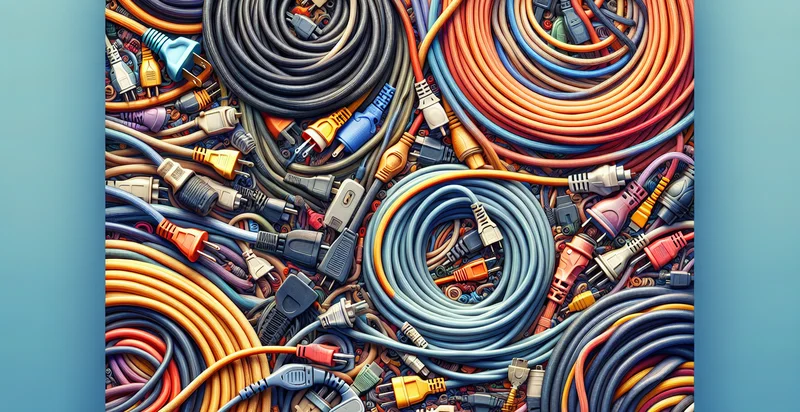Identify power cord material types
using AI
Below is a free classifier to identify power cord material types. Just upload your image, and our AI will predict the type of material used in each power cord - in just seconds.

Contact us for API access
Or, use Nyckel to build highly-accurate custom classifiers in just minutes. No PhD required.
Get started
import nyckel
credentials = nyckel.Credentials("YOUR_CLIENT_ID", "YOUR_CLIENT_SECRET")
nyckel.invoke("power-cord-material-types", "your_image_url", credentials)
fetch('https://www.nyckel.com/v1/functions/power-cord-material-types/invoke', {
method: 'POST',
headers: {
'Authorization': 'Bearer ' + 'YOUR_BEARER_TOKEN',
'Content-Type': 'application/json',
},
body: JSON.stringify(
{"data": "your_image_url"}
)
})
.then(response => response.json())
.then(data => console.log(data));
curl -X POST \
-H "Content-Type: application/json" \
-H "Authorization: Bearer YOUR_BEARER_TOKEN" \
-d '{"data": "your_image_url"}' \
https://www.nyckel.com/v1/functions/power-cord-material-types/invoke
How this classifier works
To start, upload your image. Our AI tool will then predict the type of material used in each power cord.
This pretrained image model uses a Nyckel-created dataset and has 16 labels, including Aramid Fiber, Braided, Cloth, Composite, Cotton, Leather, Metal, Nylon, Plastic and Polyester.
We'll also show a confidence score (the higher the number, the more confident the AI model is around the type of material used in each power cord).
Whether you're just curious or building power cord material types detection into your application, we hope our classifier proves helpful.
Related Classifiers
Need to identify power cord material types at scale?
Get API or Zapier access to this classifier for free. It's perfect for:
- Quality Control in Manufacturing: This function can be integrated into manufacturing processes to ensure that only power cords made from specified materials are produced. By automatically classifying materials, manufacturers can reduce defects and ensure compliance with safety and performance standards.
- Supply Chain Verification: Distribution companies can utilize this classification function to verify the material types of incoming power cords from suppliers. This verification helps to maintain product integrity, prevent counterfeits, and ensure that only approved materials are used for assembly.
- Safety Compliance Audits: Regulatory bodies can employ this function during safety audits to classify the materials in power cords. This ensures that products meet safety regulations and can help identify dangerous or substandard materials that could pose risks to consumers.
- Market Research and Product Development: Companies can leverage the classification function to analyze the materials used in competitive products. This data can guide the development of new power cord designs that optimize material usage, cost, and performance characteristics.
- Recycling and Sustainability Programs: This function can be deployed in recycling facilities to classify discarded power cords by material type. Accurately identifying materials supports better recycling practices and aids companies in meeting sustainability goals by ensuring proper disposal or repurposing.
- Consumer Awareness Initiatives: Retailers can use this function within customer-facing applications to inform consumers about the material types used in power cords. Providing detailed information promotes transparency, allowing consumers to make informed choices based on quality and environmental impact.
- Warranty and Service Management: Service centers can utilize this classification function to quickly determine the material type of power cords associated with warranty claims. This expedites the evaluation process, ensuring that replacements are issued appropriately and efficiently based on manufacturer specifications.


